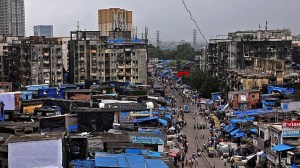Starting his Punjab leg of the Bharat Jodo Yatra, Congress leader Rahul Gandhi reached Gurdwara Sri Fatehgarh Sahib early Wednesday to pay his obeisance. On Tuesday, he had visited the Golden Temple in Amritsar.
Gandhi was seen sporting a turban on both days. While on Tuesday, he wore a saffron turban to the Golden Temple, on Wednesday he had a red one on.

Why Gurdwara Sri Fatehgarh Sahib?
The site holds supreme importance and significance in Sikh history as it commemorates the valour of Chhote Sahibzaades, the two youngest sons of the tenth Sikh Guru Gobind Singh. The word ‘Fateh’ in Punjabi translates to victory.
 Congress leader Rahul Gandhi at the Gurdwara Sri Fatehgarh Sahib, on January 11, 2023. (Image: AICC)
Congress leader Rahul Gandhi at the Gurdwara Sri Fatehgarh Sahib, on January 11, 2023. (Image: AICC)
Zorawar Singh and Fateh Singh, the two youngest sons of Guru Gobind Singh, were bricked alive on the orders of Wazir Khan, the Mughal faujdar of Sirhind, for refusing to renounce their faith and become Muslims. Zorawar Singh was nine years old and Fateh Singh was only seven. Soon after they were walled up alive, their grandmother Mata Gujri died of shock.
Before their execution, the brothers and their grandmother were held captive at the open-air Thanda Burj (Cold Tower) of the faujdar’s fort for days in the chilling month of December. For days, they were issued death threats that if they did not accept Islam they would be killed, but they refused to renounce their faith.
Today, Gurdwara Sri Fatehgarh Sahib stands on the site where the two Sahibzaadas were executed on December 12, 1705, which translates to December 26 as per the current calendar.
 Congress leader Rahul Gandhi at the Gurdwara Sri Fatehgarh Sahib, on January 11, 2023. (Image: AICC)
Congress leader Rahul Gandhi at the Gurdwara Sri Fatehgarh Sahib, on January 11, 2023. (Image: AICC)
When no one in Sirhind gave land to cremate them, a rich Hindu trader, Diwan Todar Mal, bought a small piece of land and performed the last rites after getting the Sahibzaadas’ bodies released from the Mughals. Later, Gurdwara Jyoti Sarup was built on this site in Fatehgarh Sahib where both siblings were cremated.
Story continues below this ad
Gandhi’s move to begin his Punjab leg of the Bharat Jodo Yatra from Fatehgarh Sahib also assumes significance politically as recently Prime Minister Narendra Modi-led government at the Centre observed the martyrdom day of Chhote Sahibzaades by organising a big ceremony in Delhi. Punjab Chief Minister Bhagwant Mann also attended it.
 Congress leader Rahul Gandhi pays his obeisance at Gurdwara Sri Fatehgarh Sahib, January 11, 2023. (Image: AICC)
Congress leader Rahul Gandhi pays his obeisance at Gurdwara Sri Fatehgarh Sahib, January 11, 2023. (Image: AICC)
The Centre is calling the day Veer Bal Diwas but the nomenclature has met with opposition from the Shiromani Gurdwara Parbandhak Committee (SGPC) and other Sikh bodies. They have said referring to Chhote Sahibzaade as bal (children) belittles their sacrifice and is an insult to Sikh history as both siblings are called ‘Baba’ in Sikhism.
The siblings’ sacrifice is considered supreme in Sikh history because of the extreme barbarism with which the Mughals had executed the children.
Every year, Jor Mela, a religious fair, is organised from December 25-28 in memory of the children and their grandmother at Sri Fatehgarh Sahib, which is attended by lakhs of devotees, not just from Punjab but also from other states.
Story continues below this ad
 Rauza Sharif, a dargah (tomb) in Old Sirhind of Fatehgarh Sahib.
Rauza Sharif, a dargah (tomb) in Old Sirhind of Fatehgarh Sahib.
Gandhi will also visit dargah in Fatehgarh Sahib
The Congress leader is also slated to visit Hazrat Seyfeddin Farooqi, Rauza Sharif, a dargah (tomb) in Old Sirhind of Fatehgarh Sahib. A revered site for Sunni Muslims in the district, Rauza Sharif is also known as the Dargah of Shaikh Ahmad Farooqi Sirhindi. It is a significant site in Old Sirhind owing to its historical importance and grand architecture.
It is considered a second Mecca by Sunni Muslims, going back to the times of Mughal emperors Akbar and Jahangir. Pilgrims from various countries, including Pakistan, come to the tomb to take part in the Urs of Shaikh Ahmad annually.



 Congress leader Rahul Gandhi at the Gurdwara Sri Fatehgarh Sahib, on January 11, 2023. (Image: AICC)
Congress leader Rahul Gandhi at the Gurdwara Sri Fatehgarh Sahib, on January 11, 2023. (Image: AICC) Congress leader Rahul Gandhi at the Gurdwara Sri Fatehgarh Sahib, on January 11, 2023. (Image: AICC)
Congress leader Rahul Gandhi at the Gurdwara Sri Fatehgarh Sahib, on January 11, 2023. (Image: AICC) Congress leader Rahul Gandhi pays his obeisance at Gurdwara Sri Fatehgarh Sahib, January 11, 2023. (Image: AICC)
Congress leader Rahul Gandhi pays his obeisance at Gurdwara Sri Fatehgarh Sahib, January 11, 2023. (Image: AICC) Rauza Sharif, a dargah (tomb) in Old Sirhind of Fatehgarh Sahib.
Rauza Sharif, a dargah (tomb) in Old Sirhind of Fatehgarh Sahib.




